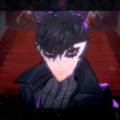Special Feature: The Dreamcast Is 20 Years Old

The Sega Dreamcast didn’t receive the respect it deserved when Sega released it. In some ways, it still doesn’t receive proper acknowledgement in this day and age.
Today marks the 20th anniversary of the Sega Dreamcast’s launch in North America, a system that was tragically Sega’s final contribution to the hardware market that wasn’t a retro console. It was a brave and risky move on Sega’s part to enter the then-next generation console race early. The plan was to remain competitive in the market and establish a place before more powerful competing systems from larger companies could steal too much of the thunder — especially Sony’s PlayStation 2.
For the tenth anniversary a decade ago, I went over the history of the system through entirely too many features, which included reminiscing about my favorite software releases. (This is another one of those moments when I realize just how long this blog has been around.) There’s no way I could do that again, nor would it be necessary. But it’s still worth remembering the moments that led up to the Dreamcast’s release that I only touched on lightly the last time around, and how its software and legacy have been treated in the years since.

It was clear from the start that Sega was overwhelmingly focused on the North American market for the Dreamcast, and Europe to a lesser extent. The Sega Saturn never recovered from the surprise launch it was given in America (and in the UK, somewhat) along with Sega’s decision to favor localizing 3D games for the system to better compete with Sony’s PSOne despite its 3D capabilities being worse. But Saturn did moderately well in Sega’s home territory of Japan. Virtua Fighter 2 was the system’s only platinum seller, but software sales were still good enough for Sega and third-party publishers to support it. This made it a risk for Sega to kill it in favor of the Dreamcast, which only really paid off in one territory.
Dreamcast performed well enough in NA, with hits like Sonic Adventure, Soulcalibur, and NBA 2K starting off what eventually became a system with a great software lineup. It received several more great games from Sega over time that are well remembered to this day, like Shenmue, Jet Set Radio, and the seemingly (and stupidly) lost-in-time Skies of Arcadia, while third-party publishers like Capcom supported it with a treasure trove of superlative ports of arcade and console games, and arcade-like titles. But even in America, not everyone was on board. Not having EA’s support, a far more formidable publisher at the time, was a big loss. Several other publishers saved their bigger software for the PS2, a specter Dreamcast could never escape.

The results were also far worse in Japan. Many Saturn owners who enjoyed the system’s titles didn’t migrate over to Dreamcast, which resulted in lower software sales for several titles. That even included Virtua Fighter 3tb, the sequel to the best-selling Saturn game in Japan — though the port lacking the graphical fidelity of the arcade game thanks to being a quick outsourcing job didn’t help. The system also struggled in Europe, to the point that Sega had to bundle in a DVD player to help it sell in some territories just before the PS2 took off.
The failures in those territories couldn’t help it overcome the adequate success it achieved in America, which is why Sega killed it mere months after the PS2 launched. The company became another third-party publisher, and their promise was initially immense. It seemed like they’d live up to that potential early on; ports of games like Sonic Adventure 2 and Skies of Arcadia bolstered their third-party lineup, along with new titles like Virtua Fighter 4 and eventually the Yakuza series. But the quality of their titles started suffering as more time went on, due to the combination of financial losses from the Dreamcast’s failure catching up with them, and eventual owner Sammy Corporation having different priorities for the company.

Dreamcast games also aren’t as easy to play as they should be, with Sega mimicking other companies in doing a pitiful job maintaining a software archive on their current platforms. The Xbox 360 version of games like the Space Channel 5 titles and Jet Set Radio are thankfully backwards compatible on Xbox One, but are stuck on PlayStation 3 for Sony console owners, and are easily capable of running on Switch. And that’s not getting into games that desperately need to be remastered (if not remade) but haven’t, especially Skies of Arcadia. Today would have been a good day to announce a new initiative, but it’s coming and going outside the anniversary acknowledgements from Sega on social media.
There’s no hope of Sega reentering the console arena (or so I think), but it would be nice if the system could still live on through ports. It’s also possible that expecting even that is too much, since, again, video game companies are incredibly bad at maintaining archives of their software. It would be nice if the system could receive a retro console of its own once technology feasibly and cheaply allows for it, which hopefully isn’t too much to wish for.
Anyway, here’s to 20 years of Dreamcast remembrance, though it still should ideally be easier to play the best games that released on the system.






There was a Skies of Arcadia remaster.
….on Game Cube.
I counted that as a port, but it’s certainly possible that Sega agrees. I’d love to know what the hold up is with an HD remaster.